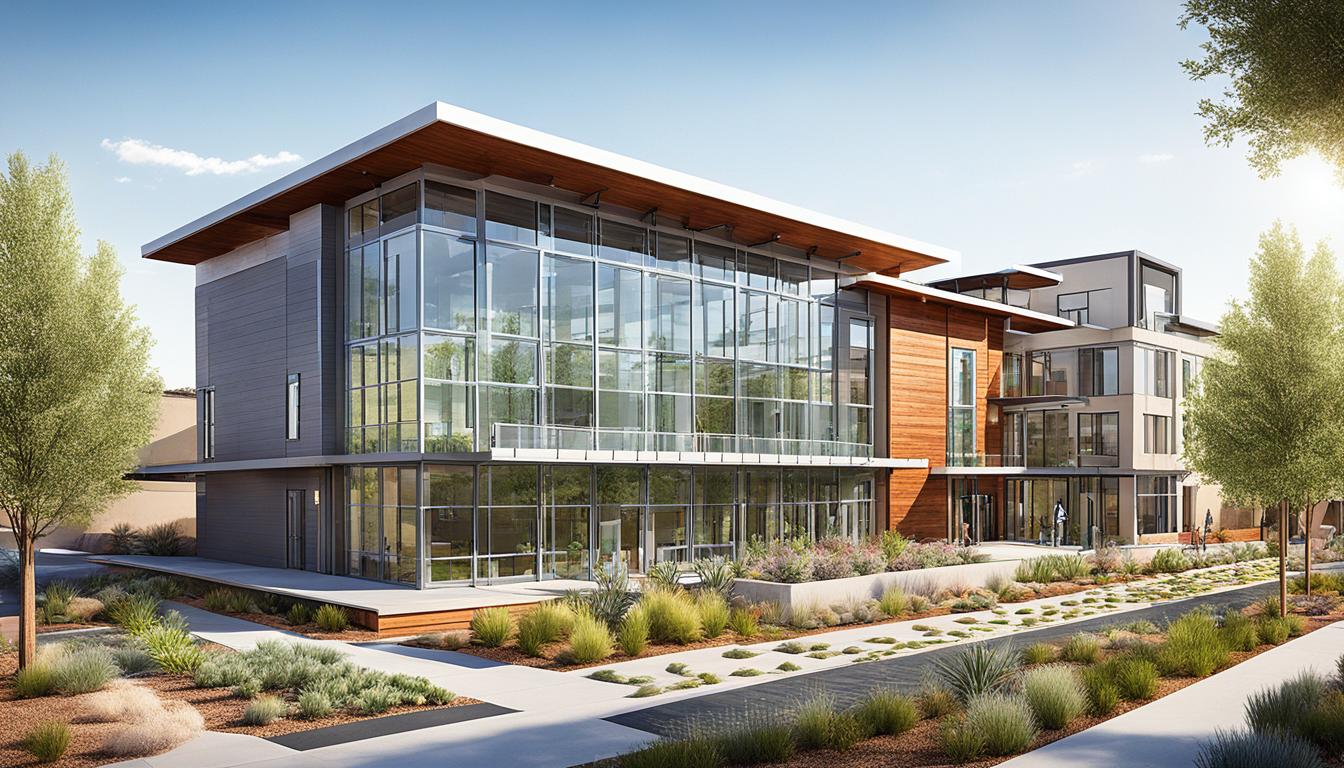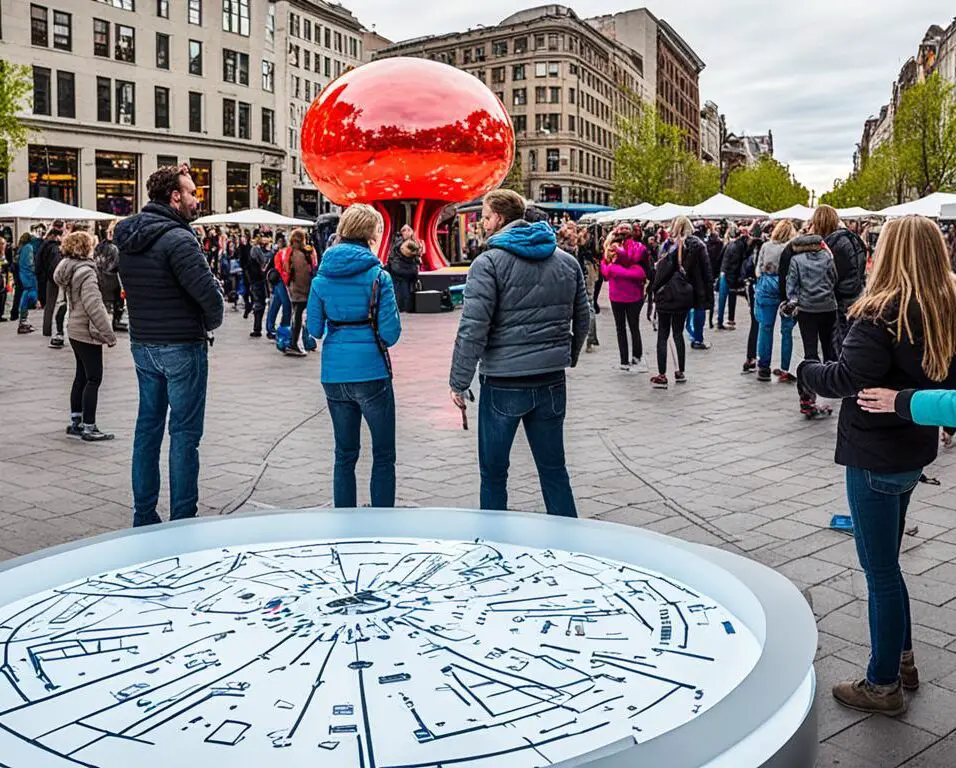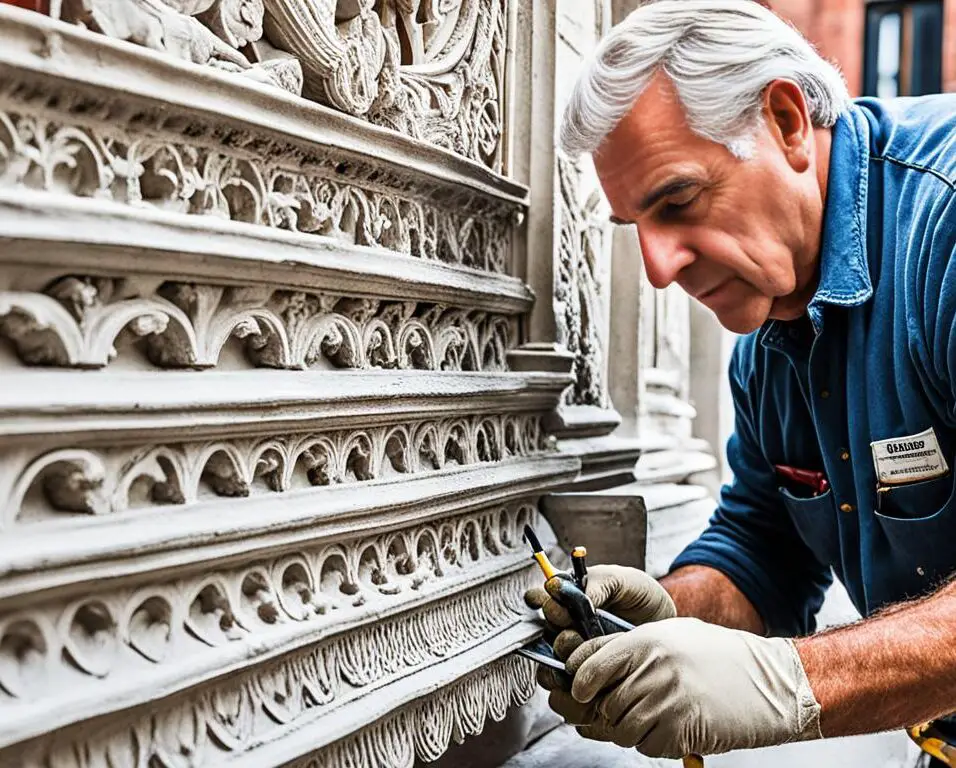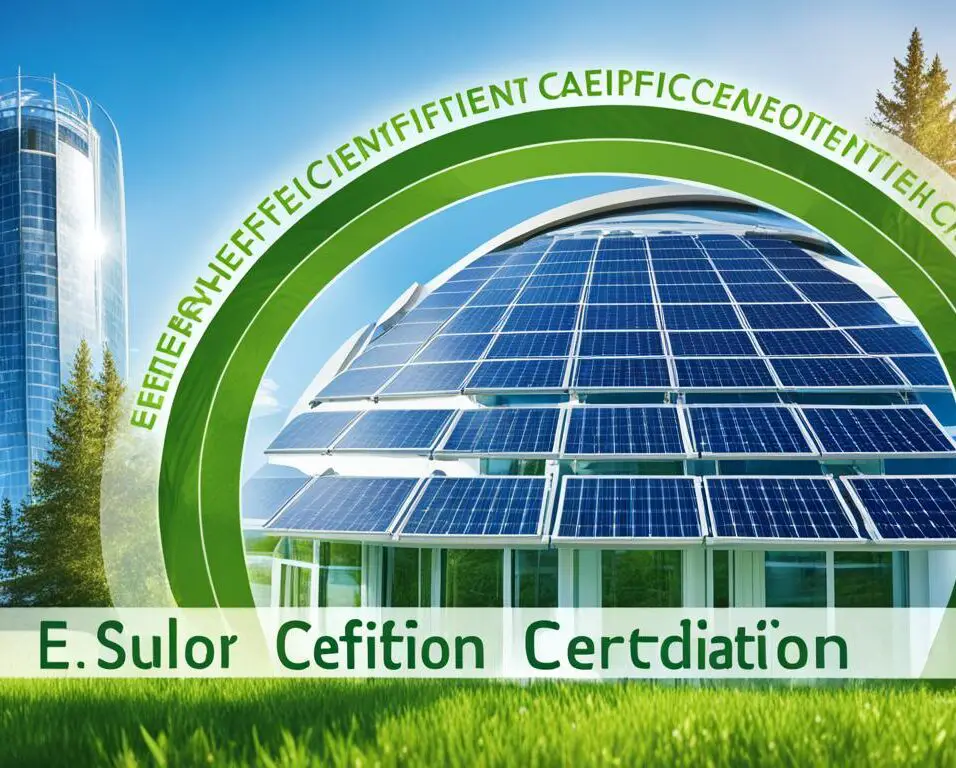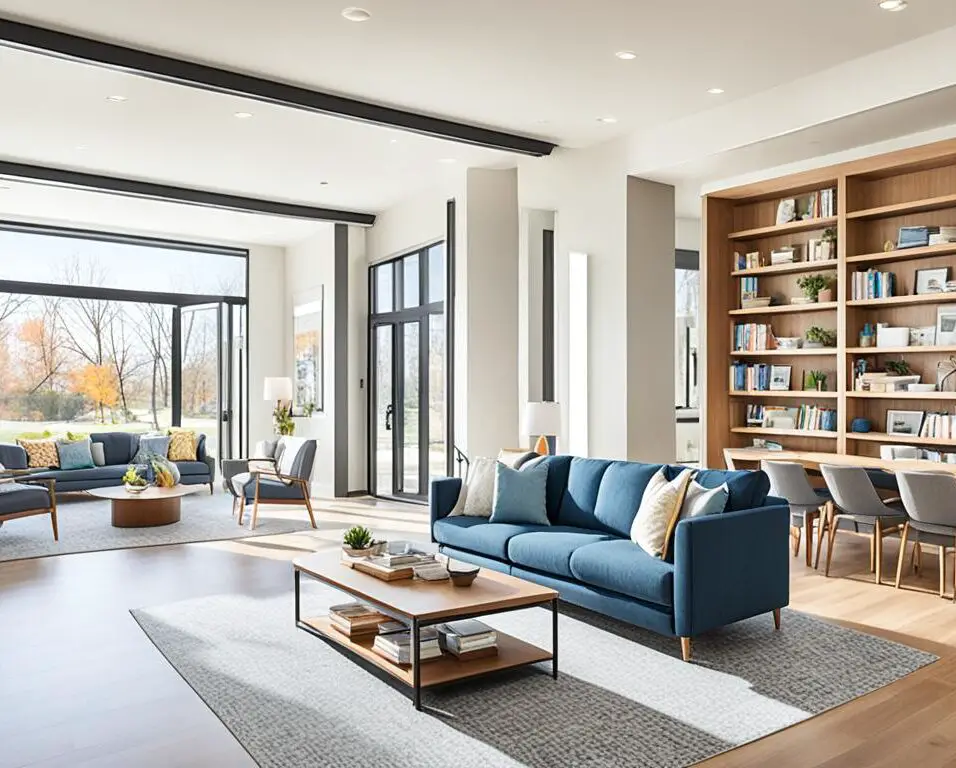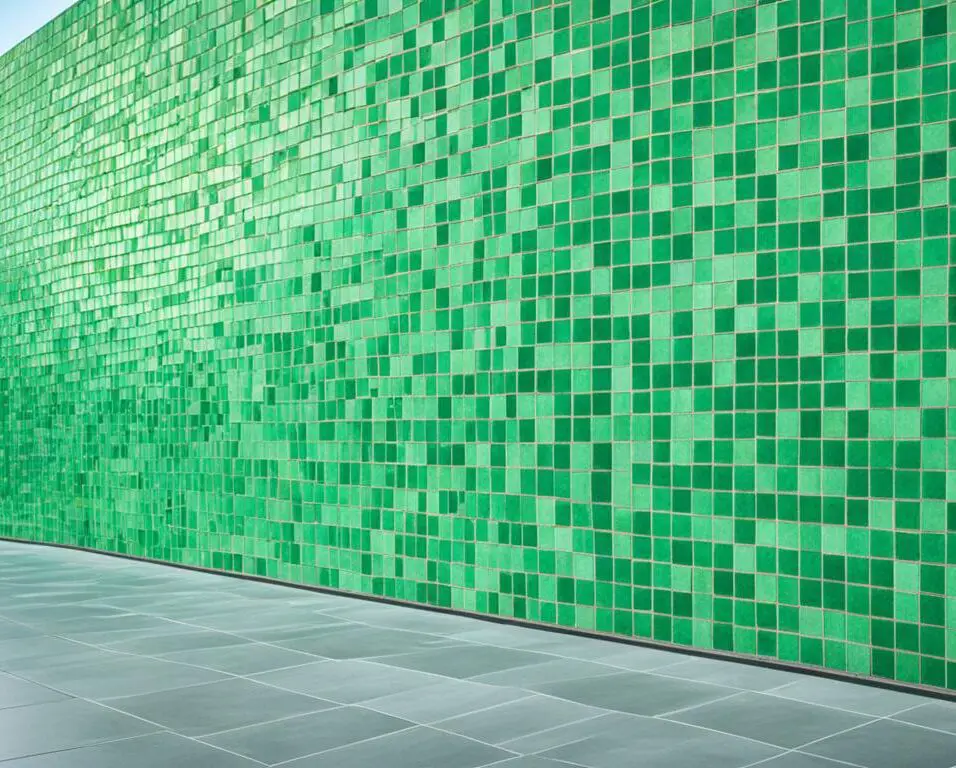Water Conservation in Architecture: Strategies for Sustainable Design
I am excited to explore the topic of water conservation in architecture and the strategies that can be implemented to achieve sustainable design. As architects and building professionals, it is our responsibility to prioritize environmentally conscious practices and minimize the impact on our natural resources.
In this article, we will delve into the initiatives undertaken by BBVA Group, a leading financial institution, to promote water conservation and sustainable construction practices. BBVA has made significant progress in reducing its carbon emissions and sourcing renewable energy, making it a notable example in the field of environmental sustainability.
Water conservation plays a crucial role in achieving sustainable design. By implementing innovative strategies and incorporating efficient water usage practices, architects can significantly reduce water consumption and contribute to a greener future.
Key Takeaways:
- Water conservation is essential in sustainable architectural design.
- BBVA Group has achieved significant milestones in environmental sustainability.
- Strategies for water conservation in architecture include gray water recycling, rainwater reuse, and water-saving fixtures.
- Efficient water usage not only preserves a valuable resource but also helps save costs and achieve green certifications.
- By adopting water conservation strategies, architects can contribute to a more sustainable and efficient future.
Strategies for Water Conservation in Architecture
In line with its commitment to sustainability, BBVA implements various strategies to conserve water in architecture. These strategies are essential in achieving efficient water usage and promoting sustainable design practices. By adopting these approaches, BBVA has successfully reduced water consumption while creating environmentally responsible buildings.
Gray Water Recycling Systems
One of the strategies employed by BBVA is the installation of gray water recycling systems. These systems collect and filter wastewater from sources such as sinks, showers, and washing machines. The treated gray water is then reused for irrigation purposes, reducing the dependence on freshwater sources for landscaping needs.
Rainwater Reuse
BBVA also harnesses the power of nature by implementing rainwater reuse systems in their architectural designs. The bank collects rainwater from rooftops and other surfaces, directing it into storage tanks. This water is then used for non-potable purposes, such as flushing toilets, cleaning, and irrigation. By utilizing rainwater, BBVA minimizes the demand for treated water, leading to significant water conservation.
Dry Urinals and Water-Saving Fixtures
Water-saving fixtures play a crucial role in BBVA’s sustainable design approach. The bank promotes the use of dry urinals, which do not require water for flushing, thus eliminating unnecessary water consumption. Additionally, water-saving fixtures such as low-flow toilets, faucets, and showers are installed to ensure optimal water efficiency throughout the buildings.
These strategies implemented by BBVA have resulted in impressive outcomes. The bank has achieved a remarkable 26% reduction in water consumption per employee, surpassing its initial target. By focusing on sustainable water conservation practices, BBVA sets an exemplary standard for the architectural community and demonstrates the effectiveness of incorporating efficiency measures into building designs.
By prioritizing water conservation in architecture, architects and building professionals can contribute to a sustainable future and mitigate the impact of resource scarcity. Implementing gray water recycling systems, rainwater reuse, and water-saving fixtures are tangible steps towards efficient water usage and sustainable design.
Below is a table summarizing the strategies employed by BBVA for water conservation in architecture:
| Water Conservation Strategy | Objectives |
|---|---|
| Gray Water Recycling Systems | Reuse wastewater for irrigation purposes, reducing freshwater consumption. |
| Rainwater Reuse | Collect and utilize rainwater for non-potable uses, decreasing the demand for treated water. |
| Dry Urinals and Water-Saving Fixtures | Eliminate water consumption in urinals and optimize water efficiency throughout the buildings. |
By implementing these strategies, BBVA exemplifies the potential for efficient water usage and sustainable design in the field of architecture.
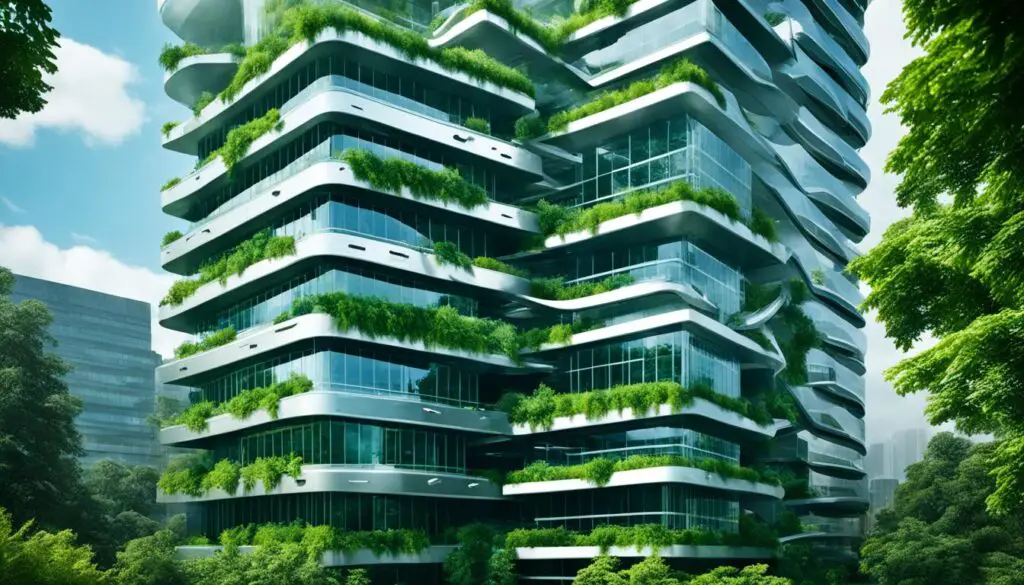
Benefits of Water Conservation in Architecture
Water conservation in architecture offers numerous benefits that contribute to overall environmental sustainability and promote sustainable design practices. By implementing strategies to reduce water consumption, architects and building professionals can make a significant positive impact on the environment and create more efficient and eco-friendly structures.
One of the primary benefits of water conservation in architecture is the preservation of the valuable natural resource of water. By reducing water usage, we can help conserve this precious commodity, ensuring its availability for future generations. This proactive approach aligns with the principles of sustainable design, which aim to minimize the environmental impact of buildings and promote long-term resource preservation.
In addition to environmental benefits, water conservation in architecture can also result in cost savings. By adopting efficient water usage practices, such as installing water-saving fixtures and optimizing irrigation systems, building owners can reduce water bills and operational expenses. These cost savings can contribute to the financial viability of projects while also promoting sustainable business practices.
Furthermore, implementing water conservation strategies in architectural design can alleviate the strain on water infrastructure. As population growth and urbanization continue, the demand for water increases. By reducing water consumption in buildings, we can ease the pressure on existing water supply systems, ensuring access to water for both current and future generations.
“Water conservation in architecture not only benefits the environment but also offers significant cost savings and helps alleviate the strain on water infrastructure.”
Moreover, incorporating water conservation strategies in architectural design can lead to buildings achieving green certifications. Certifications such as LEED (Leadership in Energy and Environmental Design) emphasize sustainable practices, including efficient water usage. By meeting the criteria for green certifications, buildings can demonstrate their commitment to sustainability and attract environmentally conscious tenants, investors, and users.
The Environmental Impact of Water Conservation in Architecture
Water conservation in architecture goes beyond the direct benefits to the building and its occupants. It also plays a crucial role in reducing the overall environmental impact of the construction and real estate sector. By optimizing water usage, architects and developers can contribute to a more sustainable and resilient built environment.
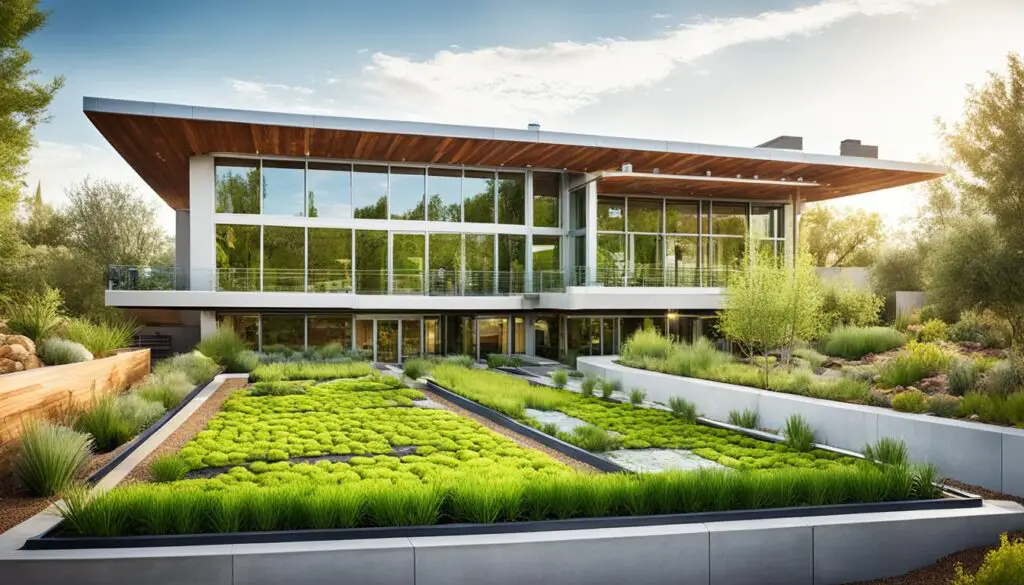
Table: Environmental Impact of Water Conservation in Architecture
| Benefit | Description |
|---|---|
| Reduced water usage | Conserving water resources and promoting sustainable water management. |
| Lower carbon emissions | Reducing the energy required for water treatment and transportation. |
| Preservation of aquatic ecosystems | Minimizing the impact on rivers, lakes, and other water bodies. |
| Sustainable urban development | Enhancing the resilience and liveability of cities and towns. |
By considering the environmental impact of water conservation in architectural design, professionals in the industry can contribute to a more sustainable and resilient future. Through innovative strategies and sustainable design principles, we can collectively build a better world for generations to come.
Conclusion
Water conservation plays a crucial role in sustainable architectural design. The achievements of BBVA, a renowned financial institution, in reducing water consumption and implementing sustainable practices serve as a model for the industry. By adopting effective strategies such as gray water recycling, rainwater reuse, and water-saving fixtures, architects and building professionals can actively contribute to water conservation efforts and create more sustainable environments.
The benefits of water conservation in architecture go beyond the positive environmental impact. Implementing these strategies can lead to significant cost savings by reducing water bills and minimizing the strain on water infrastructure. Furthermore, incorporating water conservation practices into architectural design can pave the way for green certifications, demonstrating a building’s commitment to sustainability and attracting environmentally-conscious occupants.
Incorporating sustainable water conservation strategies into architectural design not only supports the preservation of this valuable natural resource but also fosters a more efficient and sustainable future. By leveraging the power of gray water recycling, rainwater reuse, and water-saving fixtures, architects can contribute to a more water-conscious society and help create a greener and more sustainable built environment.



